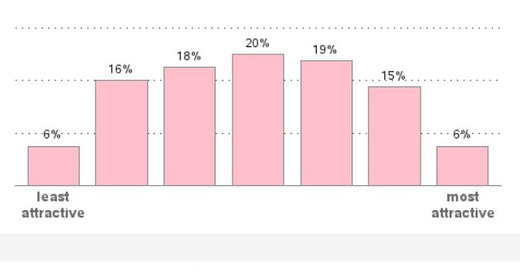
Last month, I reviewed Corey DeAngelis’ new The Parent Revolution for RealClearBooks. Here’s my full review, reprinted with permission.
Parents Take Control
On 'The Parent Revolution: Rescuing Your Kids from the Radicals Ruining Our Schools'
By Bryan Caplan
June 04, 2024
During Covid, America’s public school teachers received full pay to stop doing their jobs, often for over a year. Officially, to be clear, Zoom school was in session. But “teaching” via Zoom was barely better than nothing. Zoom schools offered little learning, severe student isolation – and no day care at all. In the early stages of the pandemic, admittedly, few parents loudly decried these three deficiencies. But America’s private schools read parents’ minds. While public schools around the country aggressively fought re-opening, private schools generally resumed in-person instruction as soon as legally possible. Parents ready to pay for more learning, real friendships, and vital day care were quickly able to get all three. Competition gave them a choice.
In The Parent Revolution, Corey DeAngelis gives readers an insider’s history of what happened once parents around the country finally saw the power of educational choice. For decades, market-oriented critics of public education argued that government funding should follow the student. DeAngelis reviews Nobel laureate Milton Friedman’s visionary position:
[A] free society is best served by having the government fund education but not operate schools. Instead, he proposed that the government “give each child, through his parents, a specified sum to be used solely in paying for general education,” and then “the parents would be free to spend this sum at a school of their own choice.”
It was public schools’ overreaction to Covid, however, that made the value of choice too strong to ignore. Why on Earth should taxpayers spend tens of thousands of dollars a year to give a child a fake education in public schools, when the private sector is happy to provide real education to any family with a voucher? Demagogic teachers’ unions notwithstanding, there really is no good answer to this challenge.
DeAngelis’ book is triumphalist. He trollishly dedicates it to American Federation of Teachers president “Randi Weingarten and the teachers unions.” He narrates play-by-play how universal (or near-universal) school choice won in Arizona, Arkansas, Florida, Indiana, Iowa, Oklahoma, Utah, and West Virginia. And he foretells many more victories; Texas, the nation’s second most-populous state, is already on the verge. What makes the book a page-turner, though, is that DeAngelis was a key player behind the scenes. For decades, he explains, school choice advocates focused on bipartisan conversion, but had little to show for it:
Decades of appealing to Democrats using liberal arguments for school choice—e.g., that it expands educational opportunity for the most disadvantaged—had failed to result in more than token support from a small number of elected Democrats. The bipartisan approach had a certain appeal to it, but it was not enough to form a winning coalition… But if the Democrats weren’t on board anyway, what did we have to lose?
Bizarrely, major education reform organizations had long been shifting from “make friends wherever you find them” to “make friends wherever you least expect to find them”:
Over time, the education reform movement had begun to drift to the political left—and spurn the political right… In [1999], political-campaign contributions by education reform advocates was nearly “evenly split between Democratic and Republican candidates.” But by 2019, more than 90 percent of the contributions were going to Democrats, even though Republican legislators were much more likely to support education reforms like school choice.
In 2020, DeAngelis started pushing the opposite strategy: work with the friends you already have to get tangible results – and hope those results attract new friends.
Most Republicans already were on board for school choice as it aligns with their general support for families, freedom, and market competition. But there were enough GOP holdouts in deep red states’ legislatures to block reform. Forming a winning coalition would either require persuading a sizeable number of Democrats to buck one of their most powerful constituencies, or persuading a similar number of Republicans to side with their base, key coalitional allies, and a majority of parents. Which seems like the easier lift?
Once DeAngelis and his allies settled on this Red State Strategy, the tactics started falling into place. Republican states were already pushing back on Covid hysteria, so choice advocates started highlighting the horrors of school closures for kids and parents alike. If every parent had a voucher to pay for private school, many would exit – and public schools would feel severe pressure to reopen. But around 2020, school choice advocates also noticed that public schools were antagonizing families nationwide with ever-higher doses of woke fanaticism. Even politically moderate parents were getting tired of the secular trinity of race, gender, and sexuality, not to mention the Kafkaesque trans orthodoxy for girls’ bathrooms and girls’ sports. Why not reach out to this silent majority – to let them know that universal school choice offers not only an exit plan for alienated parents, but an insurance policy for all parents?
The revitalized movement for school choice made new friends quickly: from activist groups like Moms for Liberty and Parents Defending Education, to governors like Glenn Youngkin and Ron DeSantis. It successfully nudged hundreds of politicians to sign an “Education Freedom Pledge” to push school choice. But by his own account, DeAngelis excelled at using social media to make the right enemies: leaders and activists in the teachers unions, and their political allies.
As an academic, I eschew ad hominem attacks on my intellectual opponents. DeAngelis, in stark contrast, decided that the best way to discredit his critics was to shine a spotlight on their hypocrisy. Whenever a public figure attacked school choice, the “school choice evangelist's” first line of defense was to find out where their kids went to school. If public schools are so great, why do you send your kids to a private academy? If depriving public schools of funding is so selfish and anti-democratic, why do you do it yourself? Whether or not you use a voucher to pay your kid’s tuition, public schools lose just as much money.
Before you condemn DeAngelis’ unrestricted ad hominem warfare, you should consider the kind of demagoguery he’s confronting. Defenders of the educational status quo, like Beth Lewis of Save Our Schools, really do rely on simple-minded populism like, “This result sends a message to the state and the nation that Arizona supports public education, not privatization schemes that hurt our children and our communities.” They really did gaslight the nation when they claimed they were “struggling to safely reopen schools” while ignoring quantitative risk analysis and fighting reopening every step of the way. Never mind woke absurdities like the Chicago Teachers Union tweet, “The push to reopen schools is rooted in sexism, racism, and misogyny.” Teachers unions and their political allies barely even try to explain why government monopoly in education is good idea. Instead, they casually libel their opponents as venal enemies of the children.
And the sad truth is that such demagoguery has worked like a charm for decades. The substantive argument for school choice is simple: Free competition delivers higher quality, lower prices, more variety, and more innovation than government monopoly. This isn’t ideology; it’s common sense and Econ 101. Milton Friedman started sharing intellectually rigorous arguments for school vouchers almost seventy years ago. But faced with platitudes about the glory of public education and the evil of privatization, intellectually rigorous arguments lost decade after decade. One tweet about a teacher demanding a “safe remote environment” while vacationing in Puerto Rico changed more minds than any lecture on economic theory or any econometric study.
While DeAngelis excels at exposing the self-serving hypocrisy of the defenders of the government’s education monopoly, this is far from the whole story. If teachers unions just wanted to maximize pay and minimize effort, they wouldn’t be pushing unpopular woke curricula, much less allowing biological males into girls’ bathrooms and sports. If teachers unions were simply greedy, state governments could just buy them off. The lesson: Defenders of the status quo are a coalition of hypocrites and true believers. Despite the union leaders who send their kids to private school, millions of ideologues are determined to use the government’s educational monopoly to indoctrinate the next generation. School choice is the only reliable way for unbelieving families to break free.
On the surface, The Parent Revolution is a work of radical optimism: American democracy is finally working. But the underlying model is depressing. The real lesson of recent reforms is that the best way to get better outcomes is to fight demagoguery with demagoguery. DeAngelis’ Red State Strategy has been amazingly successful so far, and he is likely right that Republican rule and school choice will soon go hand in hand. But there is little reason to believe that choice will spread to purple or blue states by example. The more likely scenario is that the U.S. keeps polarizing. Cheaper housing, lower taxes, and now better education will prompt continuing net migration from blue states to red. But population flows would have to be far higher to make blue states change course. The marriage of the Democratic Party and teachers unions is built to last.
Bryan Caplan is a Professor of Economics at George Mason University, a New York Times bestseller, and the author of The Case Against Education (Princeton University Press).

















"But there is little reason to believe that choice will spread to purple or blue states by example."
I understand the point. But let me supply a little reason.
Pennsylvania is a reason to believe that bipartisanship through hyperpartisanship will break through to purple states. Even if the governor there says one thing and does another, saying something matters in politics.
I dove into state candidates appeals on education and Democrats adopted school choice rhetoric even if they opposed school choice policies. That's a recent change.
Besides, the Parents Revolution is recent, in policy change terms. No state before 2021 had a universal school choice program. Politicians are looking at the political reactions, the lack of political reactions, the rewards and punishments bestowed upon the actors.
In other words, I would be happy to make a bet that a purple state passes universal school choice. You have an impressive prediction record, but I'm sure we can settle on terms.
It would be interesting to get you take on school choice in Sweden. My impression is that the experiment hasn't turned out well. Grade inflation is rampant because grades are mostly up to the teachers who have every incentive to push grades higher. Pupils pick "lazy" low-quality schools that promises perks like laptops and restaurant lunches (if you think school is daycare this is less of a problem, it only shows the waste in the whole system). You need to queue your kid at birth to get into a "good" school and those schools also seem to discriminate against special needs or otherwise hard-to-manage kids, which causes a self fulfilling prophecy of segregation.
Most of these problems were predictable and could be fixed (if it wasn't politically unpopular): Have external grading and have lotteries instead of queues. The bribe-with-perks problem is harder to adress but maybe it isn't much of an issue if education is mostly signaling.